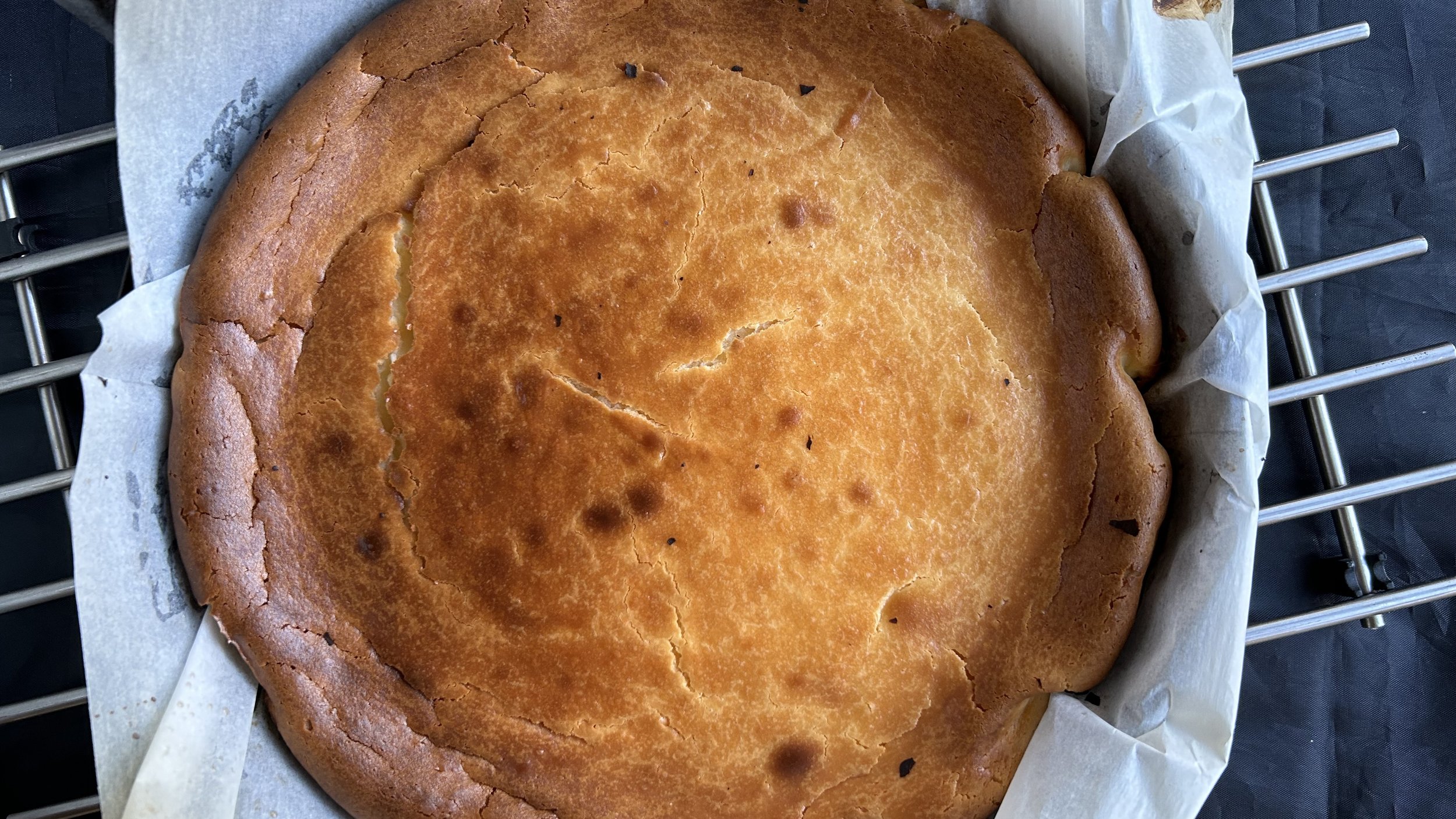BASQUE CHEESECAKE
RECIPE: Basque Cheesecake
Adapted by Bill St. John from cooking.nytimes.com, seriouseats.com, and bonappetit.com. Unlike most cheesecakes with which we are familiar, a Basque cheesecake sports no crust. Instead, its caramelized exterior top and “bottom crust” come from direct contact with its cooking pan and the intense heat of the baking oven. It is velvety, rich, like a cheese custard. Best the day after it is made but also freezes very well. Makes 1.
Ingredients
Unsalted butter, at room temperature, sufficient to butter a 12-inch pan
2 pounds full-fat cream cheese, at room temperature
1 and 1/2 cups granulated sugar
1 teaspoon kosher or fine sea salt
5 large eggs, at room temperature
2 large egg yolks, at room temperature
2 cups heavy cream, at room temperature
1 and 1/2 teaspoons vanilla extract
The finely grated zest of 1 lemon
1/4 cup all-purpose flour
Directions
Place a rack in the middle of the oven. Preheat it to 400 degrees. Butter a cooking pan, either a 10-inch springform or a 10- to 12-inch well-seasoned cast iron skillet. Line the pan with sheets of parchment paper so that there are 2-3 inches of overhang all around the pan, pressing down on the sheets so that they stick to the butter already lining the pan. (There also will be creases, but that is part of the rustic charm of the cake when finished.) Butter the sheets, too, so that they stick together, including up the sides but not including the “flaps” that overhang.
In a large bowl, using a handheld mixer or your muscle and a sturdy wooden spoon, (or the bowl of a stand mixer fitted with the paddle attachment), cream the sugar with the cream cheese until it is smooth, about 5 minutes. Add the salt and mix. Add the eggs, one by one, then the yolks, beating them until incorporated. Beat in the cream, the vanilla extract, and the lemon zest. Sift in the flour. Mix everything together very well.
Pour the thick batter into the prepared pan and bake until well-browned and almost burnt on top. The center of the cake will remain a bit jiggly. Remove the cheesecake from the oven and cool completely on a rack. The center and, to some extent, the sides will sink or pull away as they cool.
Before serving, remove the rim of the springform, or lift by the leaves of paper from the skillet (using a long spatula for support) and arrange the cake, tugging away the parchment paper. Serve at room temperature.
Wine Pairings and Why: Odd as it seems, sweet foods are the most difficult to pair with wine. Sweetness, as one or more sugars such as fructose or sucrose, combines with the majority of wines (themselves dry) to cause sensations on the tongue of bitterness, astringency and acidity. Drink a dry white Burgundy with vanilla ice cream and discover a terrible experience. But if you pair the level of sugar in the food with a corresponding (or slightly higher) level of sweetness in the wine, that works. A good example is pairing an apple tart with a medium-sweet muscat. But the overall guideline is that sweetness in food requires the same level of sweetness in wine. With some moderately sweet desserts, that wine would be a Moscato from Italy or this country or a Piedmontese Brachetto d’Acqui. With very sweet desserts, a Port, or a Bordeaux Sauternes, or even a Bual or Malmsey Madeira from Portugal.
